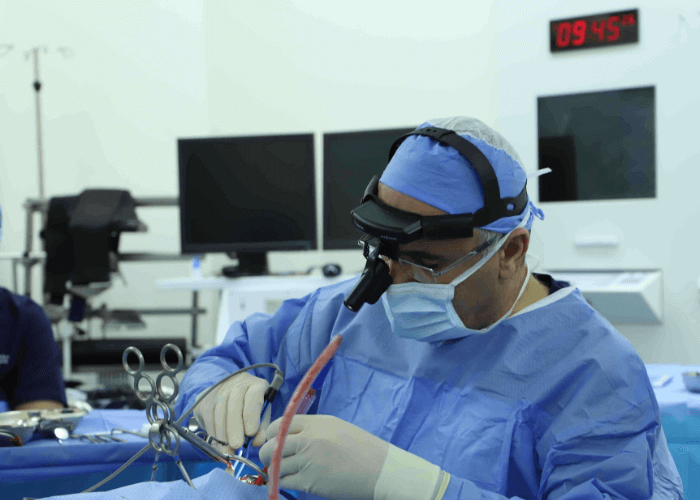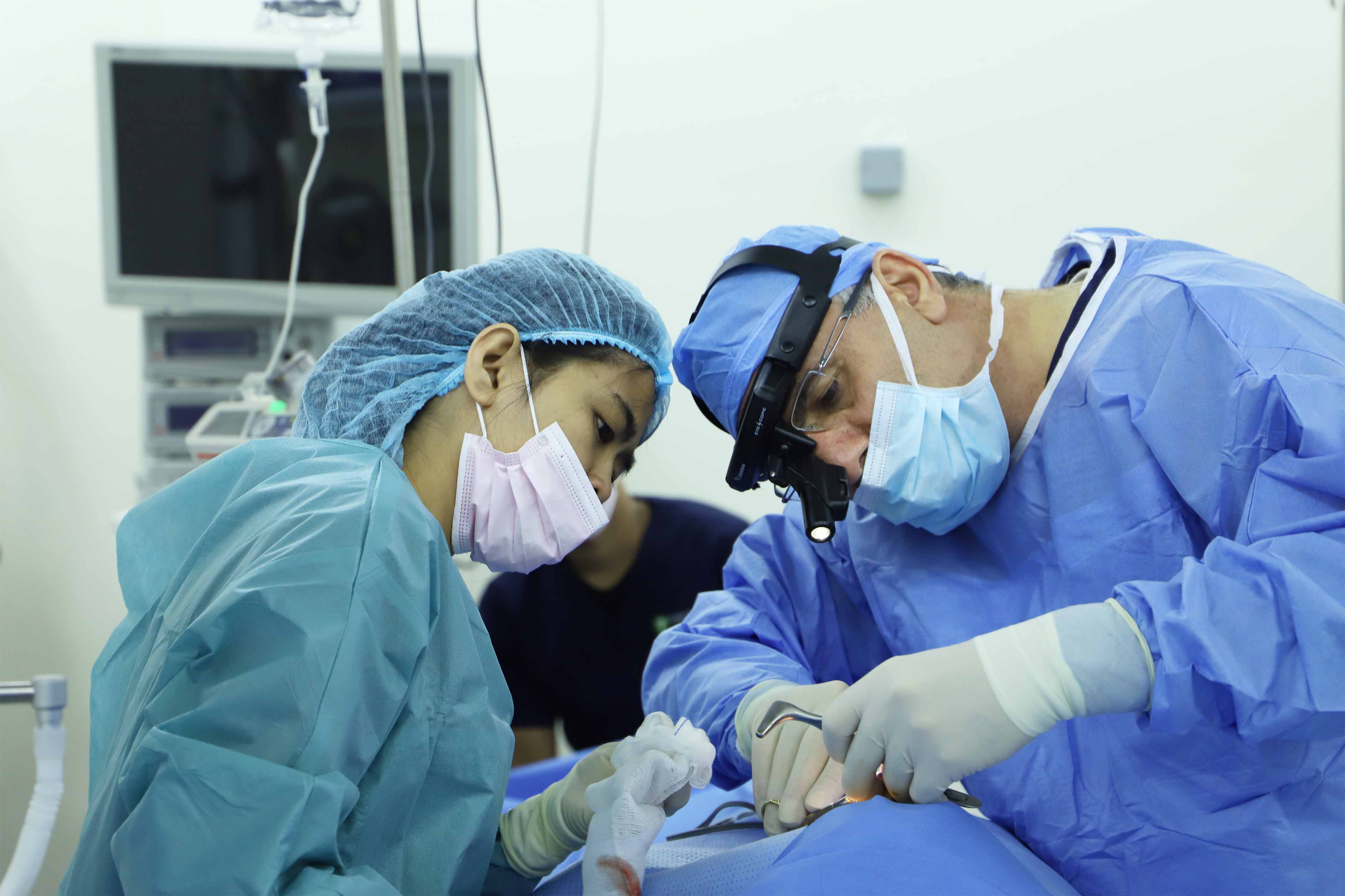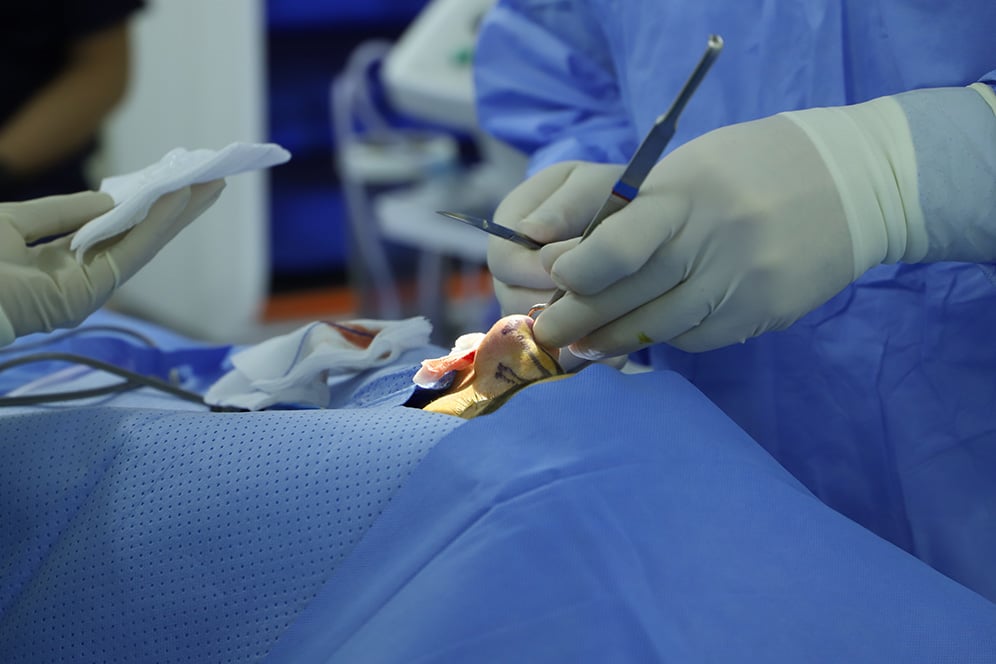Tympanic Membrane Perforation - DRHC Dubai ENT Clinic
Tympanic Membrane Perforation or Eardrum Hole
The tympanic membrane is a thin one cm squire membrane that separates the middle ear from the external ear. The eardrum is composed of 3 layers outer skin inner mucosa and fibrous tissue in between. The eardrum transfers the sound via the ear bones (ossicles) to the inner ear and protects the middle ear from external pollution and high sounds. If this membrane is perforated for any reason, it will affect the middle ear function and reduce the hearing function.
Causes of Tympanic Membrane Perforation
- The most common cause of eardrum perforation is the exacerbation of middle ear infection.
- The pus will perforate the drum by pressure, mostly this hole will cure spontaneously for one month but sometimes, it will be a persistent hole.
- Other causes are exposure to high sound pressure, atmospheric pressure, or direct trauma to the eardrum.
How the myringoplasty can be done:
Small perforations of the tympanic membrane can be healed spontaneously without surgical intervention, by protecting the ear from water, or by paper patch over fresh perforation.
But the term myringoplasty: describes a surgical procedure for closing the eardrum hole, skin incision should be done back, front of the ear, or trans ear canal sometimes.
Several types of grafts can be used:
- Homograft:
- Fatty tissue
- Cartilages
- Perichondrium
- Periosteum
- Allograft:
- Artificial
Who are the candidates for myringoplasty?
- Age older than six years
- Dry ear, free from infection
- No contraindications for general anaesthesia
- Good Eustachian tube function
- Social – The presence of the tympanic membrane perforation will affect the lifestyle, especially water activities (swimming).
- Hearing loss
Recommendation Before Myringoplasty
- Generally, patients should be fit for general anaesthesia (sometimes, we can use local anaesthesia).
- No active infection, fever, or upper respiratory tract infection.
- No chronic debilitating diseases: DM, HIV
- at least six weeks, free from discharge or infection.
- It is preferable to establish nasal breathing before the operation (nasal septum deviation, nasal polyps, or turbinate hypertrophy).
- Controlling allergic rhinitis.
- Sleep well the night before the operation.
- Avoid smoking for 1-2 weeks.
What to expect after the operation?
- You will have a firm bandage around the affected ear for up to 24 hours.
- There is a pack in the ear which may affect the hearing.
- You have to stay in the hospital overnight. You can be discharged home the next day.
- The stitch will be removed after one week.
- The ear pack will be removed in 2-3 weeks in the OPD.
- Washing of hair should be performed carefully so as not to make the ear wet. Having the ear wet can increase the possibility of infection.
- You can return to work or school after one week.
- Mild analgesic (Paracetamol or Ibuprofen) can control the pain for several days.
- There is a 10% failure rate of the operation. Another operation then may be needed.
- Travelling by aeroplane is not allowed for three months.
Click here for ENT surgical packages
.png?width=281&height=59&name=bookanappointment%20(1).png)
Dubai ENT clinic - If you are in search of an ENT specialist in Dubai, then DRHC provides experienced and leading ENT doctors in Dubai for healthy treatment. To book your appointment please call +97142798200 today!



.jpg)
.png?width=281&height=59&name=bookanappointment%20(1).png)
.jpg?width=1080&height=1080&name=DR%20HATEM%20(1).jpg)



